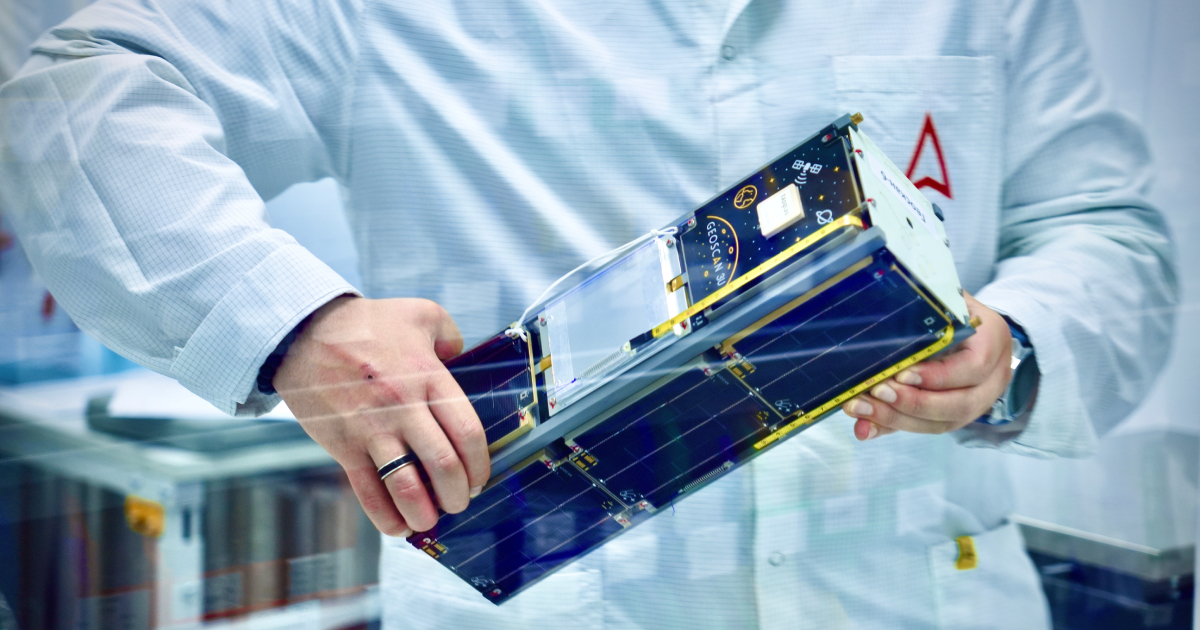A group of nine small spacecraft developed by Geoscan is set for orbital deployment in Q3 2025. The CubeSats are equipped with various types of payloads designed to test commercially potential technologies. The satellites have already been integrated with deployers developed by Aerospace Capital. They are scheduled for launch aboard a Soyuz-2.1b rocket from Vostochny, riding as secondary payloads with Ionosphere-M No. 3 and No. 4 spacecraft. The mission is operated by Roscosmos State Corporation.
Eight of the satellites in this constellation are based on the Geoscan 3U platform:
- Geoscan-1 carries two Cyclop survey cameras with long-focus and ultra-wide-angle lenses, supporting 3 MP still imagery and 30 fps video capture. The satellite's onboard navigation, attitude control, and stabilization systems enable Earth observation capabilities, with subsequent downlink via amateur radio bands.
- Geoscan-2 is designed to test Automatic Dependent Surveillance-Broadcast (ADS-B) technology, which enables space-based monitoring of aircraft position, velocity, and trajectory. The satellite will validate ADS-B signal reception from orbit, assessing its effectiveness for space-based surveillance of unmanned aerial vehicles operating in atmospheric flight.
- Geoscan-3 is designed for testing VHF-band communication technologies.
- Geoscan-4 and Geoscan-5 are equipped with transceivers developed by «Satellite system «GONETS». The satellites will test packet data transmission — a technology widely used in remote monitoring systems, personal communications, and IoT applications.
- Geoscan-6 is equipped with two Cyclop survey cameras and a gamma spectrometer jointly developed by Geoscan and the Ioffe Physical-Technical Institute of the Russian Academy of Sciences. Camera images will be transmitted to Earth over amateur radio bands, while data from the gamma spectrometer will enable localization of gamma-ray bursts and provide insights into certain cosmic processes.
- InnoSat3 is designed to test an Automatic Identification System (AIS) for maritime vessel tracking from space. The AIS calculates vessel position, speed, and heading, aids in collision avoidance, and relays data to coastal authorities for maritime traffic monitoring in open waters.
- 239Alferov was developed for the Space-π program of the Foundation for Assistance to Innovation, commissioned by Presidential Physics and Mathematics Lyceum No. 239 and the Alferov Physical-Technical School. It is equipped with a gamma-ray spectrometer co-developed by Geoscan and the Ioffe Physical-Technical Institute of the Russian Academy of Sciences and a VERA plasma thruster developed by the National Research Nuclear University MEPhI. VERA will be used to test orbital manoeuvring capabilities on small CubeSats.
Dedicated memory sector of the 239Alferov onboard computer contains 7,787 participant names and over 3,500 digital images from the "Send Your Name to Space" campaign. Sixty-seven curated space-themed artworks will be transmitted via amateur radio frequencies at 436.27 MHz using callsign RS61S.
The constellation includes one spacecraft based on the Geoscan 16U platform — InnoSat16. This marks Russia's first-ever launch of a CubeSat in this size category. It is equipped with a panchromatic camera developed by Joint-Stock Company Scientific and Production Association Lepton, featuring a 1100 mm focal length lens and a resolution of 2.5 m/px. The camera will capture data in grayscale with an extended visible spectrum range, and deliver high-contrast imagery for Earth remote sensing applications.
"This constellation represents the culmination of Geoscan systematic development in space technologies over recent years. Such launches enable us not only to refine technologies and strengthen partnerships, but also to tackle advanced research objectives beyond educational mandates. Satellites in 3U and 16U CubeSat form factors aren't just for universities — these cost-effective, compact satellites allow us to efficiently test cutting-edge domestic communication and Earth observation technologies while gaining critical experience for future large-scale space projects, including future lunar orbital missions," commented Alexander Khokhlov, Head of Small Satellite Projects at Geoscan.
The spacecraft communication sessions will commence once they reach orbit. The first CubeSats telemetry data will be publicly available on the SONIKS ground station network portal.

